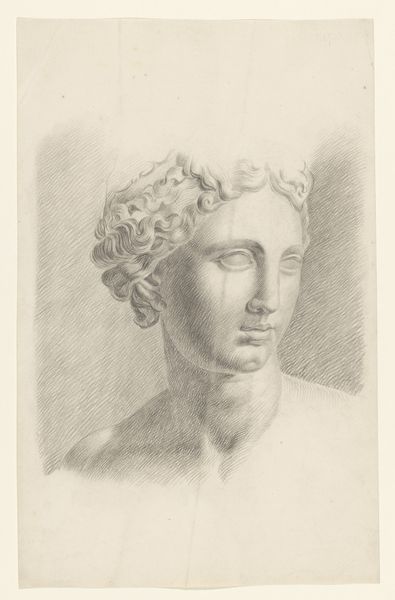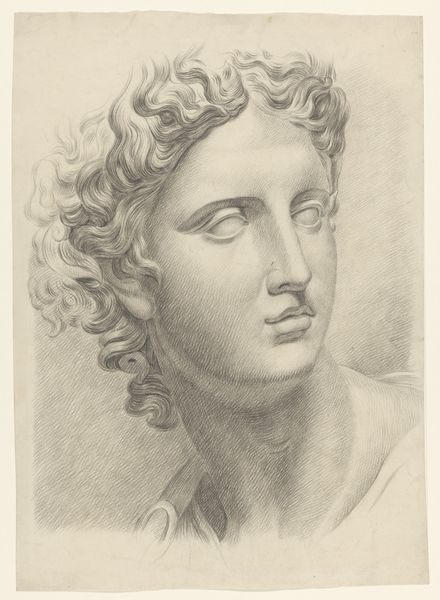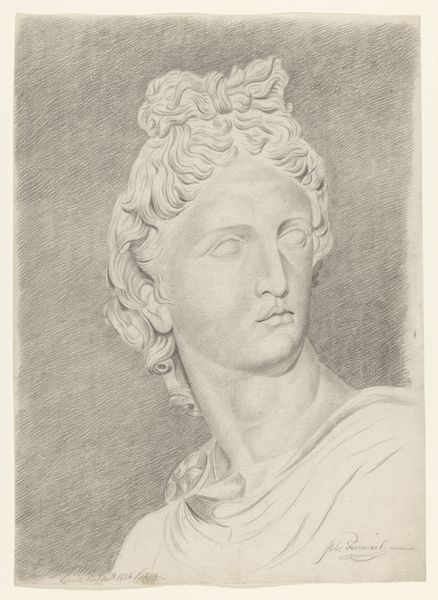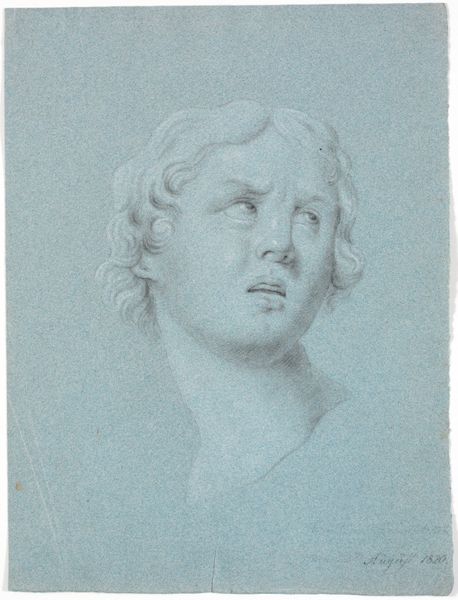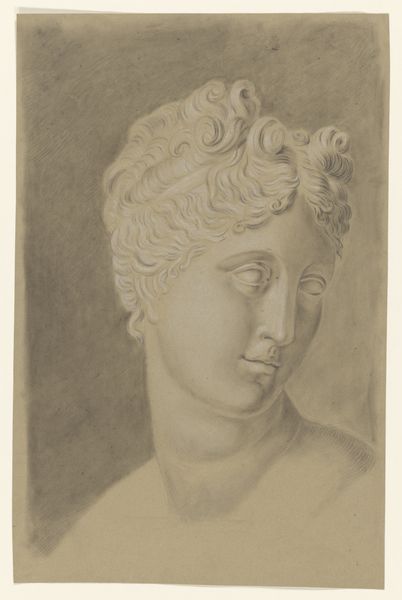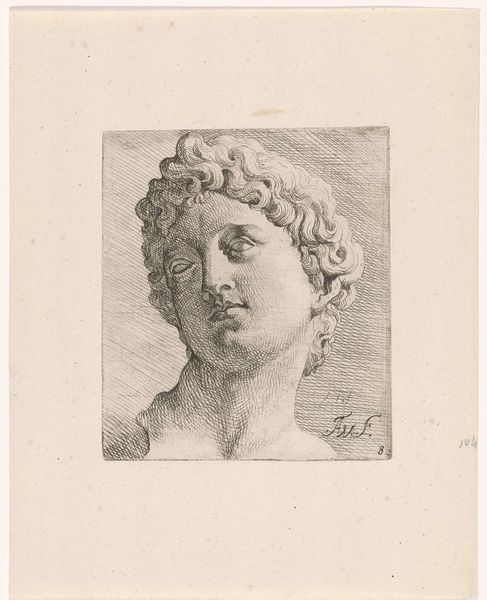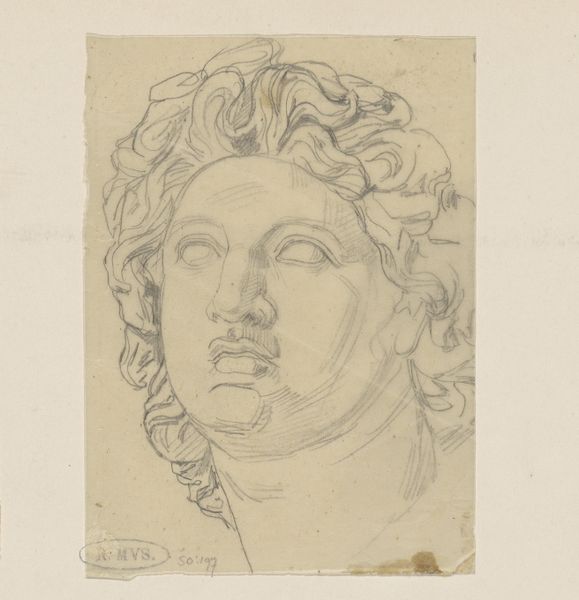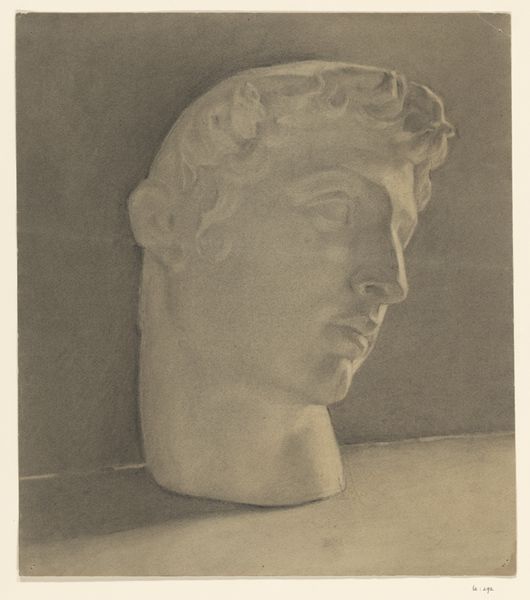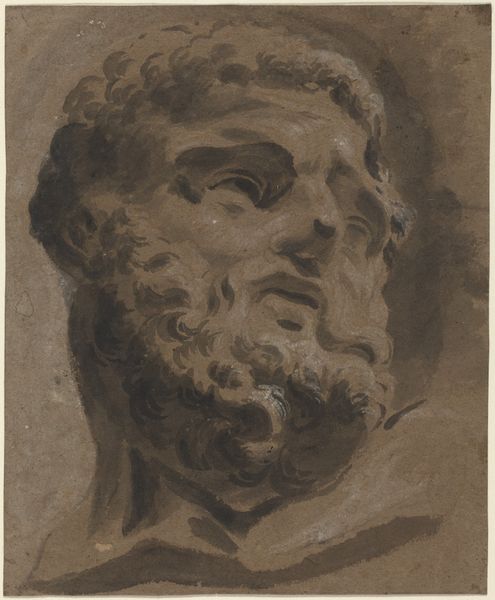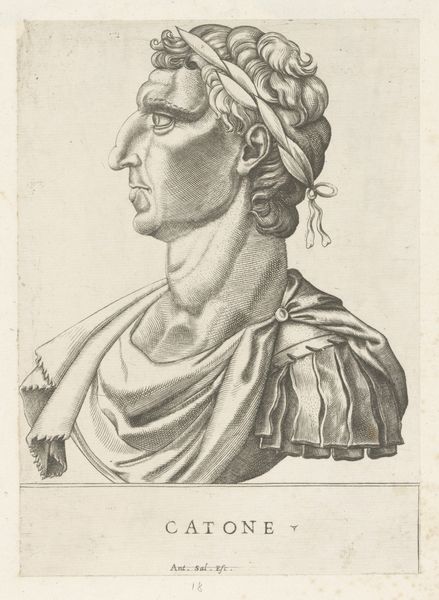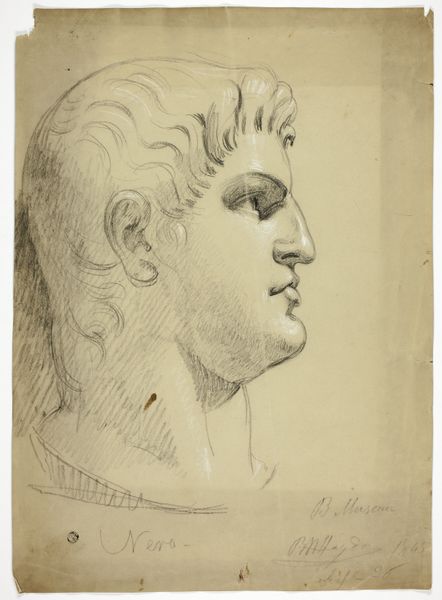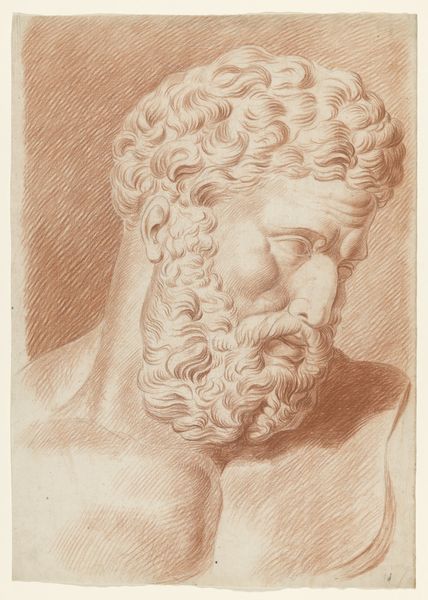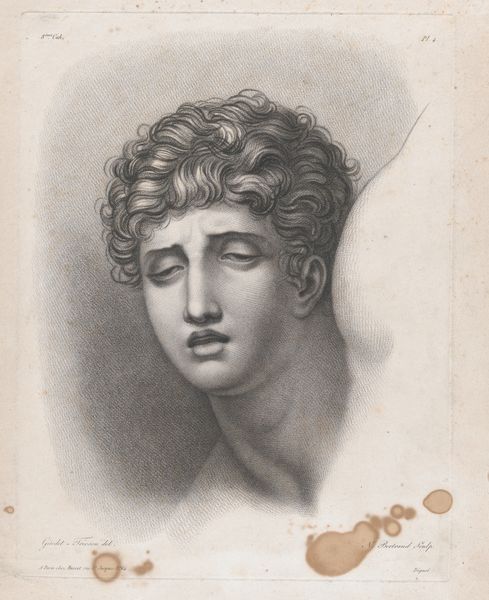
drawing, charcoal
#
portrait
#
drawing
#
toned paper
#
neoclassicism
#
charcoal drawing
#
pencil drawing
#
portrait drawing
#
charcoal
#
history-painting
#
academic-art
#
portrait art
Dimensions: 21 3/4 x 12 7/16 in. (55.25 x 31.59 cm) (irregular)
Copyright: Public Domain
Curator: What a striking head. The chiaroscuro effect really gives it a sense of depth and weight. Editor: It does project a somber mood, almost melancholic. This drawing, "Head of Meleager (recto)", created in the 18th or 19th century, attributed to Pietro Fancelli, employs charcoal and pencil on toned paper. Its neoclassical style harkens back to antiquity. I see the use of humble materials creating a dignified image. Was it intended as a study? Curator: Quite possibly. Note the deliberate tonal variations—the deep shadows contrasting with highlights. This modulation suggests the artist was deeply concerned with how light reveals form, creating a tangible, three-dimensional presence on a two-dimensional plane. The curls! Look at how each is shaped through shadows alone. Editor: I'm drawn to consider its context. Academic art valued the depiction of classical forms and the "Head of Meleager (recto)" exemplifies this focus. The making of such drawings would have involved a studio environment, assistants grinding pigments, the availability of fine paper, and the economics surrounding artistic production itself. Curator: Indeed, understanding the labor is vital, but look past the socioeconomic structure: consider instead the balance. The lines convey firmness, while the composition leads my eye rhythmically through the piece—it is dynamic. The artist wasn't only interested in historical depiction, but how one conveys such knowledge using tonal scale. Editor: You perceive it on a different plane entirely. It does also feel somehow distant to us. There’s that historical separation, and also perhaps because of the anonymous aspect. The source is itself already just a "head". And that head itself an icon already mediated through generations of interpretations. We look through layers and layers of time and representation. Curator: Agreed. That historical and cultural context changes its interpretation constantly. For me, though, the lasting impression revolves around artistry itself—the ability to evoke through something like tone and line. It’s an evocative artifact across eras and interpretations. Editor: It provides a fascinating glimpse into the artist's practice, labor and societal position and reveals the structures that enable an image like this to exist and be disseminated and, indeed, still hold power in an exhibit such as this.
Comments
No comments
Be the first to comment and join the conversation on the ultimate creative platform.
